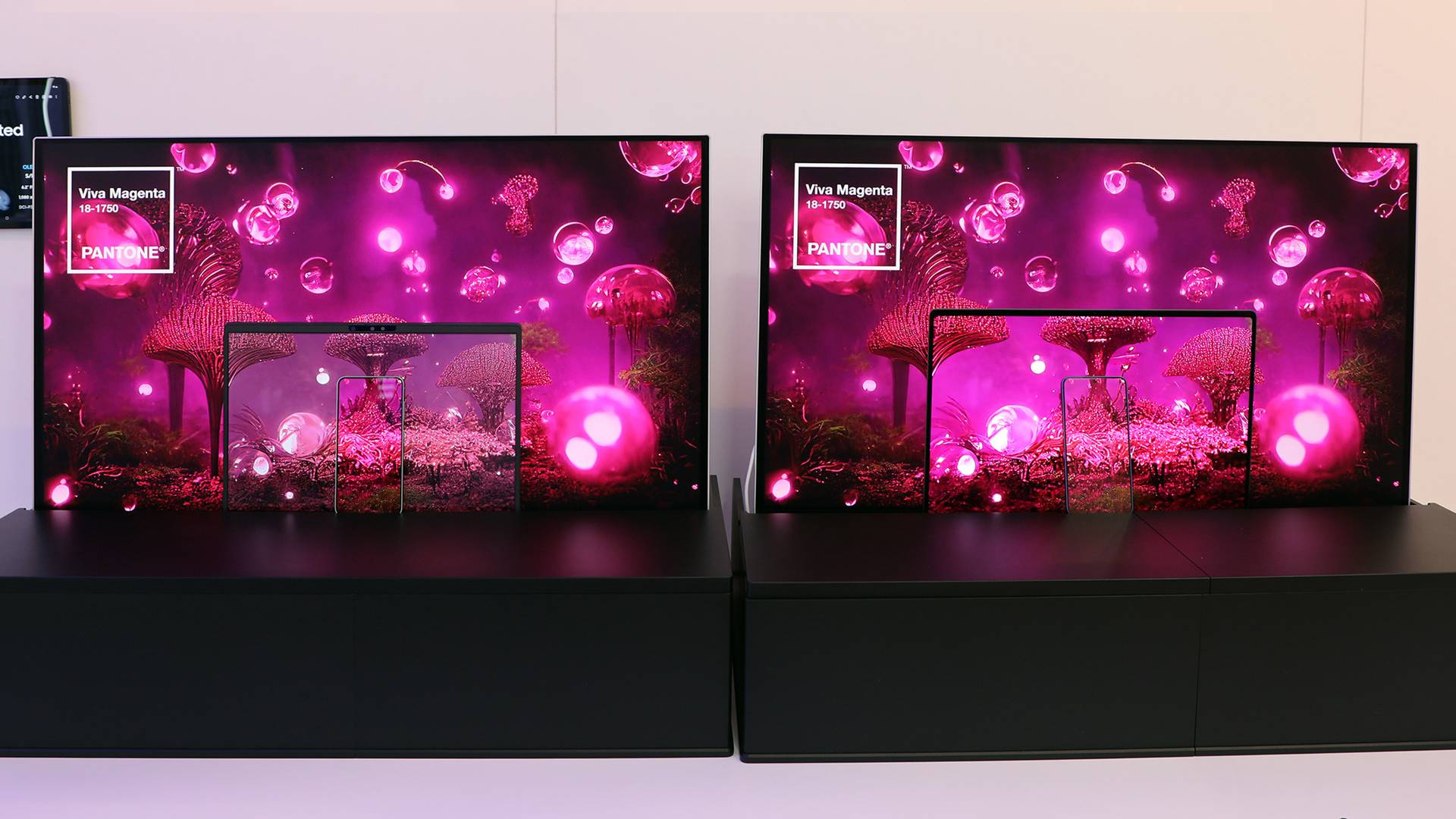
Samsung Display Unveils Blazing-Fast 500Hz QD-OLED Monitor, Raising the Stakes for PC Gaming
At Mobile World Congress (MWC) 2025 in Barcelona, Samsung Display has sent ripples of excitement through the PC gaming community by showcasing its groundbreaking 500Hz QD-OLED monitor panel. This display, a 27-inch marvel boasting a crisp 1440p resolution, is poised to redefine the standard for visual fluidity and responsiveness in gaming, directly targeting what many consider the performance "sweet spot" for PC gamers. In addition to this impressive monitor panel, Samsung is also demonstrating advancements in OLED technology for laptops, featuring 240Hz refresh rates.
The presence of Samsung Display, the division responsible for manufacturing display panels, at an event traditionally dominated by smartphones and mobile devices underscores the growing significance of OLED technology in the PC and laptop markets. While Samsung’s mobile division often steals the spotlight at MWC, this independent showcase highlights the company’s commitment to pushing the boundaries of display technology for a wider range of applications.
Among a plethora of OLED innovations, the 500Hz QD-OLED monitor unequivocally emerges as the most captivating offering for PC gaming enthusiasts. Branded as "the world’s first 500Hz QD-OLED monitor," this display pushes the refresh rate envelope, narrowly surpassing the existing 480Hz OLED benchmark. Although it slightly lags behind the refresh rates achievable by the fastest LCD panels currently available, the inherent advantages of OLED technology, namely its exceptional color vibrancy and unparalleled contrast ratios, are proving to be a major draw for gamers seeking to upgrade their visual experience. The near-instantaneous pixel response times of OLED panels also contribute significantly to reducing motion blur and ghosting, further enhancing clarity during fast-paced gaming scenarios.
The pursuit of higher refresh rates is driven by the desire to minimize input lag and improve visual clarity, providing gamers with a competitive edge. A higher refresh rate translates to smoother motion and reduced perceived latency, allowing gamers to react more quickly and accurately to in-game events. While the benefits of exceeding refresh rates beyond a certain point are subject to diminishing returns and individual perception, the 500Hz mark represents a significant leap forward in display technology.
Samsung’s introduction of a 15.6-inch 240Hz OLED panel for laptops signals a strategic push to integrate OLED technology into the gaming laptop segment, which has traditionally relied heavily on LCD panels due to their higher refresh rate capabilities. This development addresses a key limitation of OLED technology in laptops, paving the way for more visually stunning and responsive mobile gaming experiences. While OLED displays offer superior picture quality, deeper blacks, and wider viewing angles, they have previously been challenged by the power consumption demands associated with driving high refresh rates. The efficiency of these new panels will be a key factor in their adoption by laptop manufacturers.
However, the integration of faster OLED panels into laptops raises concerns about power efficiency, a crucial factor for mobile devices. OLED displays typically consume more power than LCDs, particularly when displaying bright images. Increasing the refresh rate of an OLED panel can further exacerbate power consumption, potentially impacting battery life and thermal performance in laptops. Therefore, manufacturers will need to carefully optimize power management strategies and cooling solutions to effectively harness the benefits of high-refresh-rate OLED technology in portable gaming machines.
It is important to note that these announcements originate from Samsung Display, the OEM (Original Equipment Manufacturer) division that supplies display panels to other companies. While it is highly probable that these cutting-edge OLED panels will eventually find their way into Samsung’s own monitor and laptop products later this year or in early 2026, it is equally likely that these panels will be adopted by other monitor and laptop manufacturers across the industry. This means that consumers can expect to see a wider range of high-performance OLED monitors and laptops from various brands in the near future, driven by Samsung’s innovation in display technology.
Samsung’s rival, LG, another South Korean technology giant and a major player in the OLED panel market, is undoubtedly monitoring these developments closely. LG Display also supplies OLED panels to numerous monitor and laptop manufacturers, making the competitive landscape even more dynamic. The competition between Samsung and LG will likely fuel further innovation and drive down the cost of OLED technology, making it more accessible to consumers.
The implications of Samsung’s unveiling extend beyond mere technological advancement. It signifies a potential paradigm shift in the display industry, with OLED technology poised to challenge LCD’s dominance in the gaming market. The allure of superior image quality, faster response times, and increasingly competitive refresh rates is compelling manufacturers and consumers alike to embrace OLED displays as the future of gaming.
As Michael, a seasoned technology journalist with a decade of experience covering the latest trends, notes, the developments from Samsung Display are significant. His expertise in areas ranging from mobile devices to PC hardware lends credibility to the excitement surrounding these new OLED panels. With his passion for mechanical keyboards and PC building, Michael provides valuable insight into the practical benefits of high-performance displays for PC gamers. His coverage of events such as CES and MWC positions him as a reliable source of information on the latest advancements in consumer technology.
